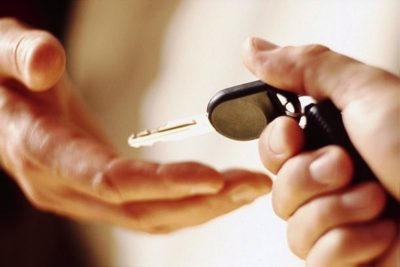- Lemberg Law
- Bankruptcy Law: Terms And Definitions
- FAQ About Bankruptcy
- Can I File Bankruptcy and Keep My Car?
You can keep your car if you file bankruptcy. Under Chapter 13, you can fold payments into your repayment plan. In Chapter 7, you can use your bankruptcy exemption, reaffirm your loan, or make a lump sum payment.

How to File Bankruptcy Without Losing a Car
It is possible to file bankruptcy and keep your car. There are two types of bankruptcy. Chapter 7 bankruptcy is the “wipe the slate clean” method, where your assets are liquidated and your creditors repaid to the greatest extent possible. After that, your remaining eligible debts are discharged. Chapter 13 bankruptcy is the “reorganization” method, where your eligible debts are folded into a three- or five-year repayment plan, after which balances are zeroed out.
If your car is in danger of being repossessed, filing Chapter 13 will stop repossession in its tracks. Under Chapter 13, you can include the back payments and remaining loan in your repayment plan, and keep your car in the process. If you’re underwater in your loan – meaning that you owe more than the car is worth – you may be able to repay what your vehicle is worth rather than what you owe.
Will I lose my car by filing Chapter 7?
If you own your vehicle or are current on your payments, you may be afraid of losing your car in a Chapter 7 bankruptcy proceeding. However, there’s a good chance you cankeep your car. The federal government has a list of bankruptcy exemptions, as does each state. Some states mandate that their exemption list be used, while others give consumers the option of using either the state list or the federal list. In California, for example, you can keep up to $5,850 of equity in your car.
This means that, if you own your car and its value is $5,850 or less, then you’ll be able to keep your car. If your own your car and it’s worth more than that, then the bankruptcy trustee can sell your vehicle, give you $5,850, and give the remainder to your creditors.
If you have a loan on your vehicle, then you need to determine how much equity you have. Your equity is the amount you could sell it for, less the amount you still owe. If your equity is within the exemption, then the trustee can’t sell it.
Are there other options for keeping my car in bankruptcy?
There are a few other options for keeping your car after a Chapter 7 bankruptcy proceeding. If no money would be left over after deducting sales costs, the trustee’s commission, and your exemption, then the trustee won’t bother selling it and you can keep it.
Some states have what’s called a “wildcard” exemption that can be used for any property. In California, that amount is $1,550 plus unused portions of other named exemptions. This amount can be used to protect vehicle equity that exceeds the normal exemption.
You can also choose to reaffirm your car loan. This option is open to you if you haven’t fallen behind on payments. A reaffirmation agreement consists of the same terms of the original loan. You continue to make payments on it until the loan is paid off.
Finally, if you have access to cash, you can purchase your car outright in a lump sum payment.
When it comes to keeping your car after a bankruptcy proceeding, negotiations can get tricky. Relying on the skill of an experienced bankruptcy attorney will help ensure that the process goes smoothly.
Have questions? Call us now at 855-301-2100 for a Free Case Evaluation.
Our services are absolutely FREE to you.
The harassing company pays our fees.